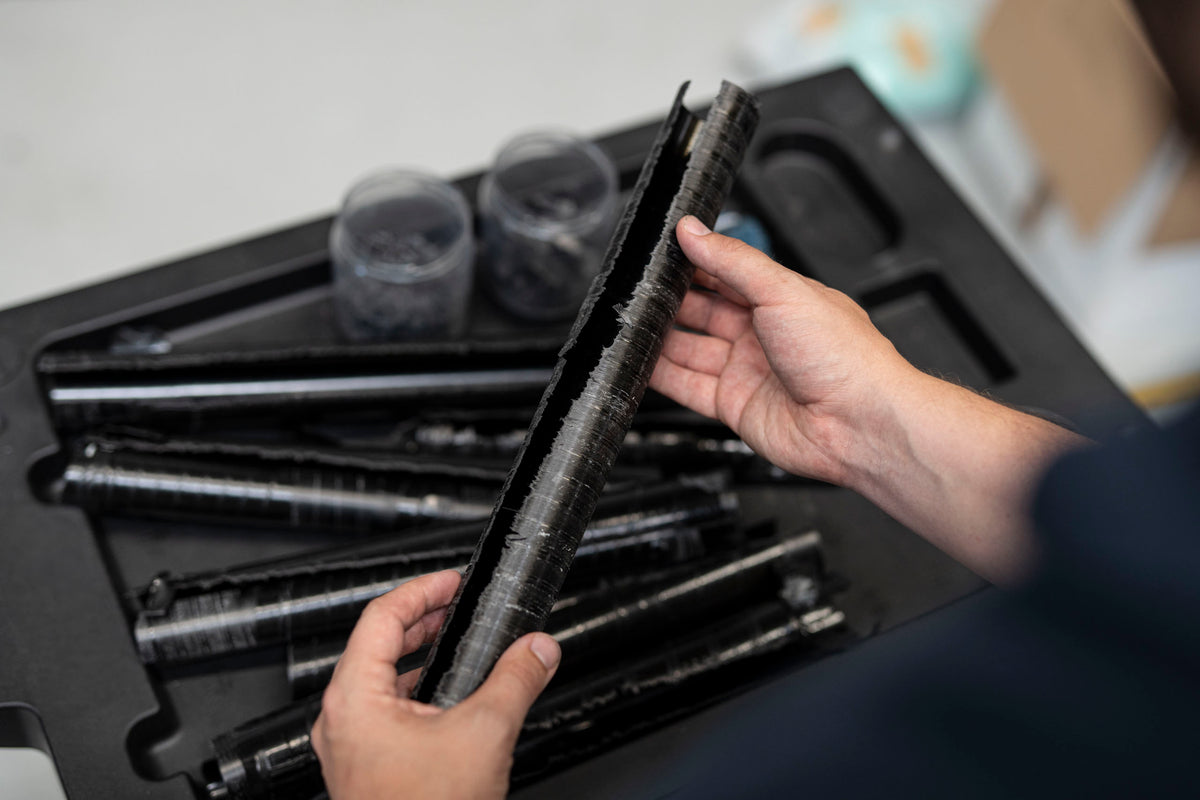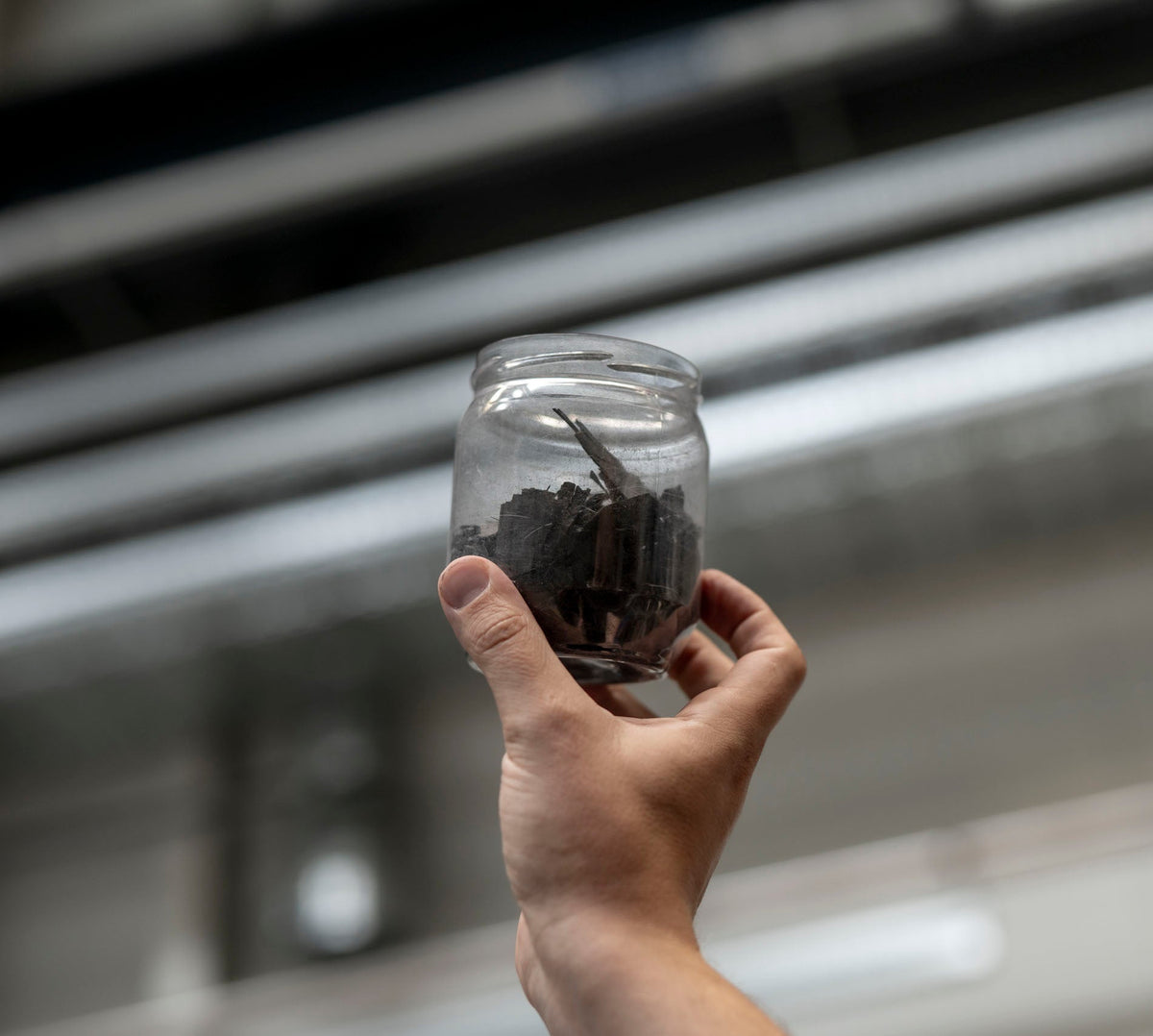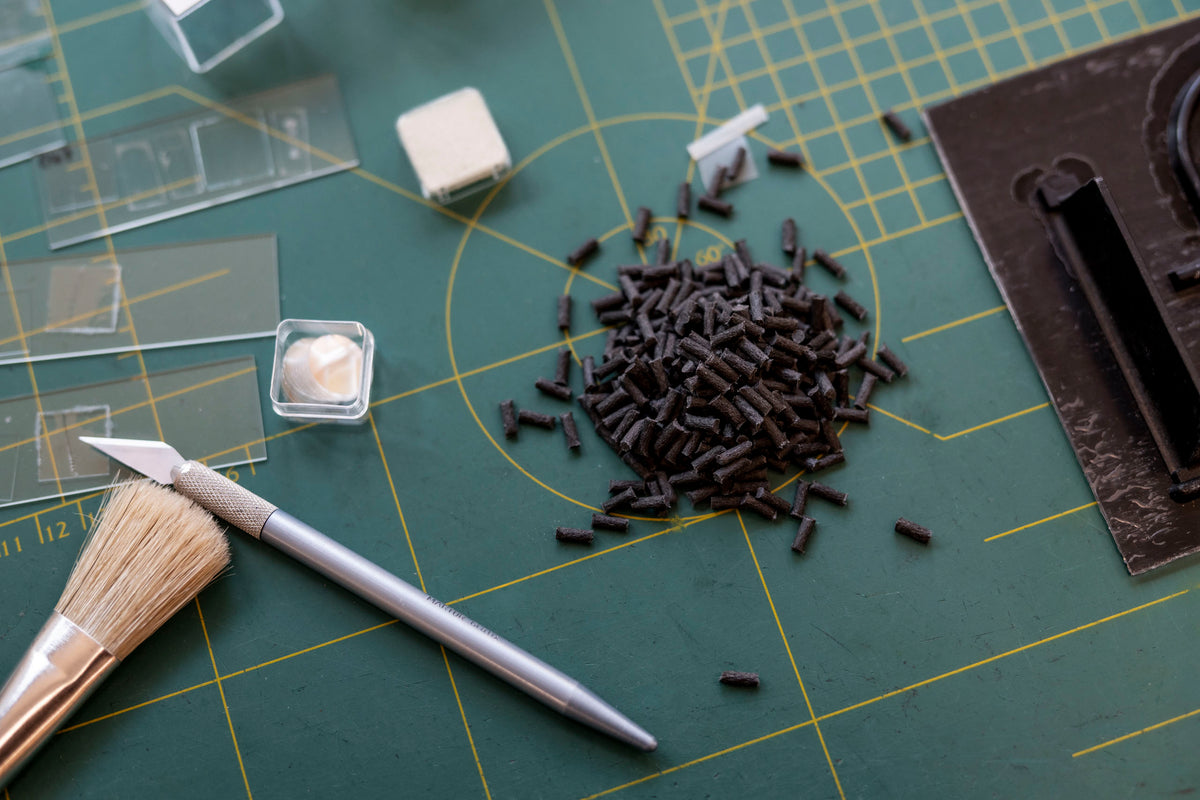TAFNEX™ is a thermoplastic composite material that consists of carbon fiber (CF) and polypropylene (PP). TAFNEX™ is produced as a unidirectional tape (UD Tape) but can also be provided in further finished products: Structural Sheet, Woven Sheet, Design Sheet, Sandwich Panel, and Tube. Furthermore, the TAFNEX™ brand includes Compound materials and a novel CF production technology based on microwaves.
In general, TAFNEX™ is suitable for applications where polypropylene meets the necessary requirements, but enhanced performance is desired. Typical areas of application include the Automotive sector, Sports & Leisure industry and UAVs. Thanks to its outstanding resistance to chemicals and (salt) water, TAFNEX™ is also perfectly suited for Industrial applications, including maritime environments.
To determine if TAFNEX™ is suitable for your application, please contact our experts. We are happy to discuss your needs and provide sample material.
Thermoplastic composite materials like TAFNEX™ can be mechanically recycled into reusable compound material. Unlike thermal and chemical recycling of thermoset composites, this process is less energy-intensive and keeps the fiber and matrix material together. During the recycling process, the composite compound can be tailored to desired specifications and adapted for different manufacturing processes. Find out more about the recycling process below.

Various input streams can be recycled, including production scrap or end-of-life components. Different materials can be recycled together as long as they all consist of the same polymer matrix (in this case PP). The initial step in recycling involves breaking down the input material through methods such as crushing, shredding, grinding, (guillotine) cutting, or a combined approach. This step is crucial as it greatly affects the fiber length of the recycled compound.

After the input material has been reduced in size, the resulting flakes undergo further processing into the final compound. This involves an extrusion process where unreinforced polymer material is added to achieve the desired fiber content. This step is essential as the fiber content of TAFNEX™ exceeds the suitable level for processing compounds.

Recycling TAFNEX™ results in a fiber-reinforced PP compound, where the reinforcement includes carbon fibers and potentially other reinforcing fibers such as glass or flax, depending on the input material. This tailored compound is suitable for manufacturing new components via Injection Molding or Fused Granular Fabrication with or without a virgin TAFNEX™ reinforcement.
In collaboration with a partner, we conducted comprehensive research on the reusability of TAFNEX™ through recycling. We examined multiple input material streams, each unique in composition and shape. Discover more about our recycling studies below.
We carried out this study as part of the publicly funded research project WI-IN, focusing on the combination of Tape Winding and Injection Molding. For this research, the input stream included TAFNEX™ Tubes, some of which featured a locally added PP-GF functionalization.
A highly diverse input stream was analyzed in this study, including various TAFNEX™ Sheets and components made from such sheets. Certain components featured an injection-molded PP-GF functionalization.
For this study, the input stream was composed solely of TAFNEX™ UD Tape, intended to simulate the recycling of scrap material generated during production, and leftover material.
In this study, the input stream consisted exclusively of TAFNEX™ Structural Sheets, designed to mimic the recycling of production scrap material as well as thermoformed components. The investigation included full carbon fiber reinforced sheets as well as hybrid sheets that were reinforced with both glass fiber and carbon fiber.
This study focused on evaluating the recycling of an automotive front bumper beam, which was made from a TAFNEX™ Structural Sheet overmolded with PP-GF compound. The aim was to represent the recycling process for similar components that have reached their end-of-life stage.


























